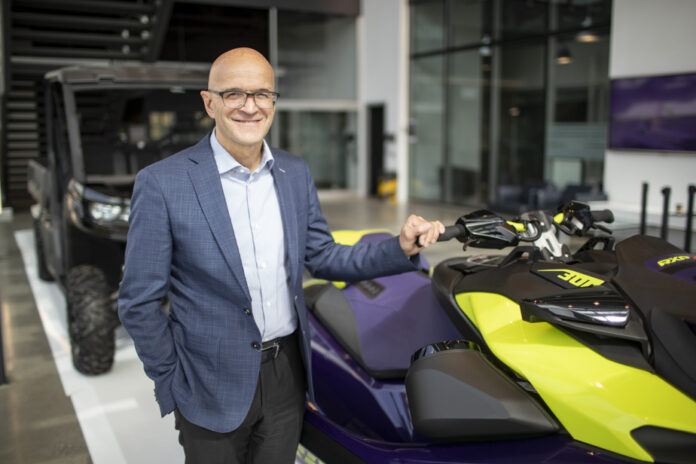The youngest who surpasses her elder. It is in a way the story of BRP, detached from Bombardier in 2003 before landing on the stock market a decade ago. It was impossible to predict such rapid growth, recognizes José Boisjoli, the architect of the recreational vehicle manufacturer.
“I could not anticipate that we would be there, he explains, in an interview with La Presse Thursday, on the sidelines of the annual meeting of the Quebec multinational. I always believed that you could be successful, but it happened gradually. »
While Bombardier – refocused exclusively on business aviation – accumulated restructuring over the last ten years, the scenario was very different at BRP: the manufacturer of Ski-Doo, Sea-Doo and Can-Am multiplied the launches of new products, made acquisitions and laid the foundations for a new division, the marine group (boats). It has also relaunched the production of motorcycles in addition to embarking on a project to electrify its products.
The annual get-together for the maker of snowmobiles, watercraft, three-wheelers and other recreational vehicles coincided with the 10th anniversary of its arrival on the Bay Street floor on May 29, 2013.
Its annual revenue jumped 245% to $10 billion and its share price increased more than four times. At the close of the Toronto Stock Exchange on Thursday, BRP’s market value was $7.5 billion, compared to $5.2 billion for Bombardier.
“We’re talking about a company that was seen as Bombardier’s little sister and which eventually became the biggest,” said Professor Karl Moore of McGill University’s Department of Management. José [Boisjoli] has done a lot of work. When you think of the Can-Am three-wheeled motorcycle, it was a success that allowed the company to diversify. »
Although BRP shares are traded on the stock exchange, the company is managed by the Beaudoin-Bombardier family (45% of voting rights) and Bain Capital (32.6% of voting rights). Mr. Boisjoli was able to count on the presence of shareholders capable of being more patient, underlines Professor Moore, adding that this is not a luxury enjoyed by all managers.
The big boss of BRP, at the helm since 2003, plays the card of humility despite the successes of the firm he heads. On more than one occasion, Mr. Boisjoli prefers to praise the efforts of his employees as well as the “corporate culture”.
“We were able to preserve it despite our expansion,” he says.
The story could have been different. If the former recreational products division hadn’t been spun off in 2003, it might never have had the financial resources to realize its ambitions, Moore said.
“At Bombardier, the needs have been enormous for the C Series and the development of the Global family of private jets,” recalls the professor. Looking back, it’s been incredible for the company to be able to stand on its own two feet. »
Ahead of its annual meeting, which was webcast-only, BRP provided an update on its financial performance for the first quarter ended April 30. With the exception of a decrease in revenue in the marine segment, the indicators remained green during the months of February, March and April.
The multinational once again exceeded analysts’ expectations by posting an increase in its profits and revenues (see table). Despite rising interest rates and deteriorating economic conditions, the performance of the Quebec automaker is not yet showing any signs of slowing down.
“In the United States, 35% of the population earns more than US$100,000 and 70% of our clients have an annual salary of more than US$100,000, illustrates Mr. Boisjoli. Better-off consumers continue to buy our products. »
On the Toronto Stock Exchange on Thursday, the company’s stock fell 1.4%, or $1.38, to close at $95.13.
Production of the Ski-Doo snowmobile begins.
Separated from Bombardier, the recreational products division becomes BRP.
The company is listed on the Toronto Stock Exchange on May 29.
BRP arrives on NASDAQ to trade its shares there.
Deployment of the product electrification strategy.















